Celestite
Celestite is a gorgeous blue mineral, often used as an ore of Strontium. It is also referred to as Celestine.
We offer a range of Celestite pieces, including tumbled Celestite, rough pieces, and more.
Showing all 5 results
-
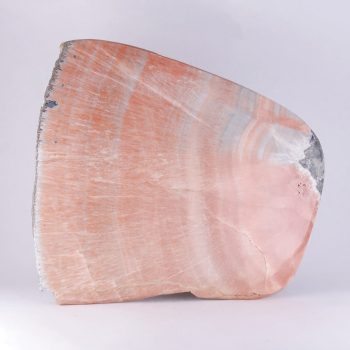
Barytocelestine slices
Price range: £10.00 through £15.00 -
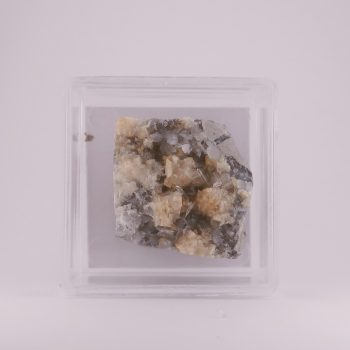
Celestine from Condorcet, France
£10.00 -
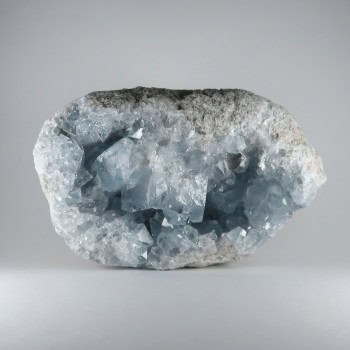
Celestite druzy / geode fragments
£15.00 -
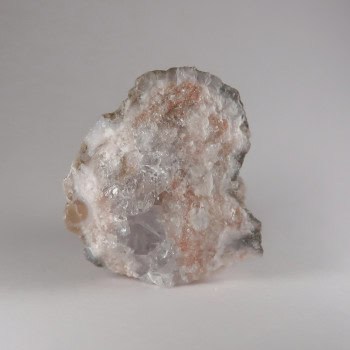
Celestite from El Aila, Spain
Price range: £5.00 through £7.50 -
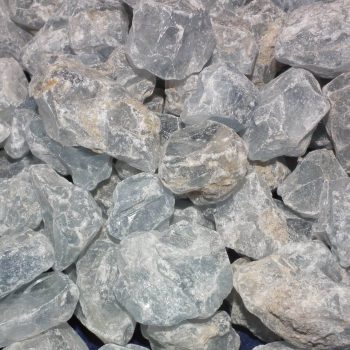
Celestite Specimens / Rough
Price range: £3.00 through £5.00
Appearance, Uses and History
Celestite is a blue mineral, often crystalline. It is also referred to as Celestine.
It is used as an ore for the element Strontium, used in the production of fireworks and pyrotechnics, as well as various alloys of other metals.
There is a cave in Ohio that has become somewhat of a tourist attraction due to its Celestite crystals; the cave measures 10 metres deep and contains crystals up to 1 meter wide!
Locales
Excellent specimens of Celestine can be found in various countries, including Austria, France, Germany, Libya, Madagascar, Mexico, Morocco, Poland, Russia, Slovakia, Tajikistan, and Turkey.
Most Eurasian countries have Celestite occurrences – sometimes in pale colours, sometimes with unusual colours – yellow, green, red.
Mineralogy
A specific density test is another good option and non-destructive.
Hazards and Warnings
Celestite is comprised of Strontium, which sounds scary – but it isn’t harmful in this form – unless ingested or inhaled.
Almost all rocks, minerals (and, frankly, almost all other substances on earth) can produce toxic dust when cutting, which can cause serious respiratory conditions including silicosis.
When cutting or polishing rocks, minerals, shells, etc, all work should be done wet to minimise the dust, and a suitable respirator or extraction system should be used.
Translations
Arabic:
Hindi:
- सेलेस्टीन
Portuguese:
- celestino
Bengali:
- সেলাস্টাইট
- সেলস্টাইন
Indonesian:
Punjabi:
- ਸੇਲਸਟਾਈਟ
English:
- celestite
- celestine
Italian:
Russian:
- Целестин
- Целестит
French:
- célestine
- célestite
Japanese:
- セレスタイト
Spanish:
- celestita
- celestina
German:
- Celestit
- Celestin
Korean:
- 셀레스 타이트
Thai:
Gujurati:
- સેલિસ્ટાઇટ
Mandarin and Traditional Chinese:
- 天青石
Urdu:
- سیلسٹین
- سیلسٹائٹ
